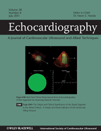The Influence of Circadian Variations on Echocardiographic Parameters in Healthy People
Abstract
Background: Our aim was to investigate whether diastolic functions, myocardial velocities and pulmonary vein flow show diurnal variation within a 24-hour day. Method and Results: Fourty-four healthy subjects with no history of cardiovascular or systemic diseases (32 males, 12 females; mean age 34.7 ± 8.7 years, mean BMI: 25.5 ± 3.5 kg/m2) were enrolled in this study. None of the subjects had a history, symptoms or signs of cardiovascular or systemic diseases or were taking drugs of any kind. All underwent echocardiographic examination at 7 a.m., 1 p.m., 7 p.m., and 1 a.m. M-mode systolic, diastolic velocities and pulmonary vein flow measurements were obtained. There were no differences in systolic and diastolic blood pressures and heart rate. The left atrial diameter was greater at 1 p.m. (3.80 ± 0.44; P = 0.031). The isovolumic contraction time (ICT) was found to be the shortest (41 ± 12 msn; P = 0.050), and ejection time (ET) the longest (290 ± 31 msn; P = 0.017) at the 1am measurements. The mitral myocardial performance index (MPI) was lowest during the 1 a.m. measurements (0.42 ± 0.11; P = 0.001). The systolic myocardial velocities (Sm) obtained from the septum and inferior region were significantly higher at 1 p.m. and lower at 7 a.m. (9.17 ± 1.79, 10.25 ± 2.29; 8.11 ± 1.06, 8.63 ± 1.49; P < 0.05). The late diastolic velocities obtained from the lateral, inferior and anterior regions were higher at 1 p.m. and 7 p.m. Conclusıon: The left ventricular diameter and ejection fraction did not exhibit circadian variations. However, our data indicate that some parameters reflecting diastolic function, systolic myocardial velocities and MPI, as well as left atrial diameter change at different times of the day, independent of blood pressure and heart rate. (Echocardiography 2011;28:612-618)




